Play for Place
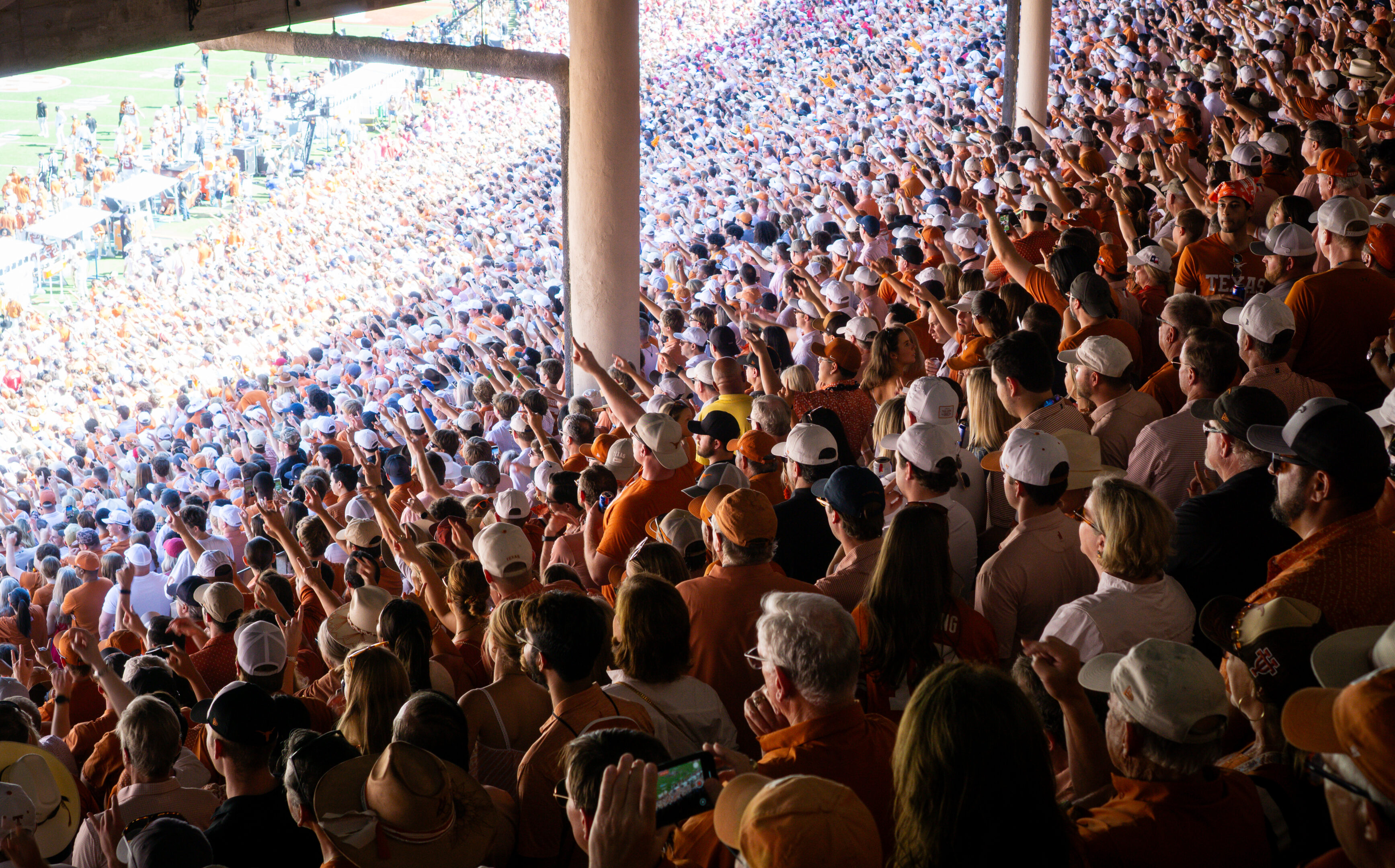 University of Texas fans cheer on at Cotton Bowl Stadium at Fair Park during the annual Red River Rivalry game on October 11, 2025, Photo by Yavar Saremi
University of Texas fans cheer on at Cotton Bowl Stadium at Fair Park during the annual Red River Rivalry game on October 11, 2025, Photo by Yavar Saremi
On a January afternoon in 2020, an unusually placed hockey rink—installed at the spot typically reserved for a 50-yard line—transformed Dallas’ iconic Cotton Bowl stadium into something both improbable and decidedly local. It was all for the NHL Winter Classic, a spectacle of an event that Monica Paul, executive director of the Dallas Sports Commission, still cites as a personal favorite. While the venue had long been associated with football and entertainment, on this winter day it became something more—a focal point of Dallas’ collective identity. In this moment in time, thousands gathered around their mutual love of sport.
As a city, Dallas is known for its economic vitality and cultural ambition, but it is at our stadiums, arenas, and local fields where our city has built its truest sense of civic belonging. Extending beyond industry or geography, sports have become the consistent means through which Dallas defines itself. It is the great equalizer and unifier.
How did sport become the carrier of Dallas’ civic identity? The answer is multifaceted, dynamic, and best explained through the lens of the civic and community leaders, athletes, and designers who collectively built the foundation for this unifying force.
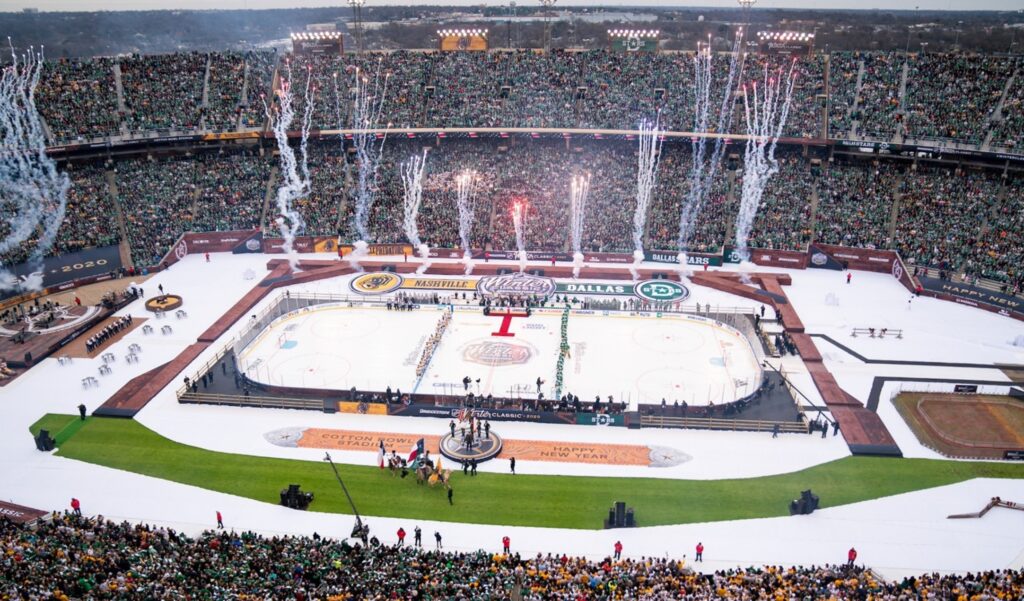
Why Here?
Dallas has reinvented its economic engine more than once — from banking and oil to telecom and technology — without allowing one industry to dominate or solely define it. Sports, by contrast, have endured. Fandom passes through generations, and traditions continue. “Longevity plays a big role,” notes Owen Coffee, AIA, a principal architect with Overland International, who has worked on several major venues in the metroplex. Teams come and go, but the habit of gathering remains.
For Dallasite Matt Valentine, who will launch the city’s first USL Championship team Atlético Dallas in the Cotton Bowl in 2027, the city’s suitability for professional soccer is obvious. “If you had to start a professional soccer team anywhere in the United States,” he says, “Dallas was clearly the biggest and best opportunity.” He cites a metro of nearly eight million, a high share of residents raised with the game, and a void inside the city limits for a professional soccer club among the reasons Dallas is ripe for professional soccer. The Cotton Bowl, to him, is not just available square footage. Rather, it is “near the heart of Dallas and carries great history.”
Dallas-based historic preservation architect Norman Alston, FAIA, offers another angle. “No mountains. No beaches,” he deadpans. What Dallas lacks in geographic magnets it has made up for with cultural invention. “We’ve had to create places and traditions that give people a reason to be here and belong,” he says.
Ryan O’Connor, a Dallas native and deputy director of Dallas Parks and Recreation, echoes the importance of belonging offered by our city’s sports community. “Sports are culturally inclusive here, perfect for transplants,” he says. “And for locals, it’s just part of growing up. One of the reasons we have such a sports culture is that it starts young. We grow fans from the start.” O’Connor’s own life traces that continuity: He grew up playing in Dallas and now raises his kids on the same fields. “Sports is what you do here, when you have kids,” he says. His perspective is shared by the likes of Rolando Blackman, former Dallas Mavericks player, and Jacob Huerta, director of sports at Dallas Youth Sports in Oak Cliff. Youth athletics, they’ll explain, is part of the civic fabric were belonging first takes root.
The city’s event infrastructure also plays a critical role in sports’ dominant impact on identity and community, with its unusually deep venue ecosystem that allows Dallas to host everything from youth tournaments to international broadcasts. The result is a feedback loop. Events come because Dallas is ready—and Dallas is ready because it builds for events.

Identity in the Making
In Dallas’ vacuum of a single narrative, sports filled the role of identity maker. After the 1963 assassination of President John F. Kennedy in Dallas, the city’s leaders sought a more positive narrative. The Dallas Cowboys, who were emerging at the time, provided one. Says Alston: “[The Dallas Cowboys] offered a symbol for success the entire region could take pride in…and helped Dallas recover its confidence.” This sense of achievement, whether in the wake of tragedy or in more fruitful times, carries off the field and into communities.
Coffee sees in Dallas a fusion of team brands and owner personas that could only have grown here. Oil money, tech celebrity, and a certain theatrical confidence converged with the NFL’s broadcast machine and the NBA’s pop-culture reach.
For Valentine, the meaning of sport is personal. After all, he says: “Business doesn’t unite a community like sport does.” Valentine’s early memories of baseball connect directly to his current work in professional soccer. He remembers the Texas Rangers before they were champions and the astonishment he felt when they finally won the World Series. Loyalty, in his telling, is not an abstraction.
Former Dallas Mavericks great Rolando Blackman describes this influence as spiritual momentum. “Sports is a heightened format of life,” he says. People see possibility when they watch world class athletes up close. They rewrite what they think they can do. That is a civic project — even when it happens in a local gym.

Bird’s-eye-view of Fair Park during the Texas Centennial including the Lagoon, Ford Building, Federal Building, Fair Park Stadium and the Hall of State (Nov 11, 1936). Dallas Public Library Digital Collections

Image of Big Texas and the Cotton Bowl at the State Fair of Texas, 1984-1993, DeGolyer Library, Copyright Southern Methodist University

Cotton Bowl at Fair Park, September 2025, Image courtesy of Overland Partners
Place and Fabric: Venues as Anchors
Big venues are powerful, but they are not identities by themselves. The Cotton Bowl helps explain why. The stadium hosts long-standing rivalries and large-scale events but remains physically and symbolically tied to Fair Park and nearby neighborhoods.
For Alston, its upper deck is “a lesson in proximity,” a counterpoint to other iconic bowls that place spectators farther from the field. Yet the Cotton Bowl’s power is not only in form. It is in where and how it sits inside Fair Park, surrounded by a civic landscape of Art Deco pavilions and historic neighborhoods that recognize the place as theirs.
Renovating such places requires a careful balance of modernization and preservation. The need for updating functionality — broadcast operations, fan experience, accessibility, and safety — must be achieved without losing the story of the building or its character-defining elements. “We have to preserve what makes [the Cotton Bowl] recognizable” Alston says. As far as recent renovations to the Cotton Bowl, O’Connor believes that careful balance was struck: “What I like about the renovation is that it still looks like the Cotton Bowl,” O’Connor says. “We didn’t change it, we enhanced it. That’s what makes it valuable for both sports and entertainment, while maintaining it as a landmark for the community”
Architecture alone cannot sustain identity, however, as the surrounding districts, infrastructure, and community connections determine how well a venue serves its city. Further, adjacent streets, transit, and public spaces extend the impact of major buildings into daily life.
Regional vs. City Identity
It is worth noting that Dallas alone cannot take full credit for the collective sports identity of the broader Metroplex, as our sports ecosystem extends to nearby cities such as Arlington and Frisco, home to AT&T Stadium, Globe Life Field and Toyota Stadium. These suburban cities have catalyzed and realized their own districts and hosted the highest levels of play. The question is what distinguishes city identity within a healthy region. Valentine argues that Dallas proper still needs its own urban venues to build that identity. His decision to base Atlético Dallas in the Cotton Bowl follows that logic. “We’re not competing with the Cowboys or Mavericks,” he says. “We’re aligning with them, while giving Dallas its own soccer home.”
Paul supports this view, advocating for investment in both local and global opportunities. “We should strengthen what serves residents first,” she says. “That’s what sustains growth.” Jacob Huerta, who operates and coaches youth sports in Oak Cliff, agrees that community-level facilities are just as critical. “If a city wants to be known for sports,” he says, “that identity has to be visible at neighborhood level.”
Sports as Civic Glue
Perhaps most importantly, sports remain one of the few activities in Dallas and the broader metroplex that consistently bring people together from different backgrounds. Stadiums, arenas and recreational fields create a shared focus and environment where people with very different politics and paychecks can cheer for the same thing.
Blackman recalls summer basketball at the MLK and Singing Hills recreation centers. “Once you’re on the court, you stop thinking about who people are outside of it,” he says. Huerta echoes this sentiment for youth sports. “Teams become like families,” he says. “They teach accountability and belonging.” Still, public facilities need investment to keep those opportunities accessible. While Dallas doesn’t lack places like this it has seen pandemic-era cuts in programming and schedules that have yet to be reversed. After all, Huerta notes, “Maintenance sends a message [to the neighborhoods] about whether that community is valued.”
Robin Blakeley, a Dallas-based former sports agent who has worked with professional athletes throughout Texas, underscores the role of athletes themselves. “Dallas has been home not just to world-class athletes but to world-class people who choose to stay,” he says. “They attend community events and support local programs. That connection builds long-term trust, and that is why we love them back.”
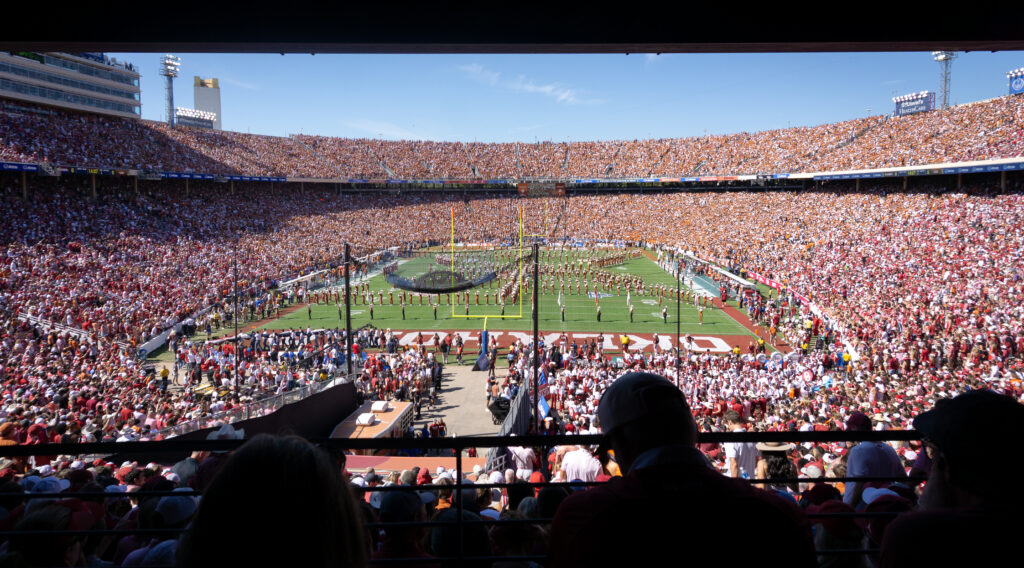
The Future: Insecure or Integrated?
Dallas has often sought validation from the outside, but its current trajectory suggests a growing confidence. Paul talks about planning beyond the events that will happen in Dallas as part of the 2026 World Cup and looking toward a 2031 Women’s World Cup bid. The focus, she says, is not only on anticipated economic impact—impressive as it is—but also on legacy: new fields, mini-pitches, equipment donations, and corporate engagement that outlasts a tournament.
Coffee associates Dallas’ long-term success with operational quality and thoughtful design. “The infrastructure for hosting these events is built out and well supported [in Dallas],” he says. “The city is not defined by the events it hosts. The events come because of Dallas.”
Valentine insists on authenticity, a fan-first lens, and community presence as the strategy to build a new club’s loyalty.
Alston cautions that the Cotton Bowl will not become a premier historic venue by accident. Dallas must first value it, then tell its story with conviction. Civic investment must be viewed through a lens of both retention and growth: “We want to retain our signature historic events,” says O’Connor “but we also want to grow opportunities for the Cotton Bowl to attract new soccer matches and concerts. These events are what makes living in our community unique.”
Blackman offers a test for whether the future is integrated. When the best athletes in the world come to your town, the culture changes. People envision distances they can go. That only becomes identity if neighborhoods can translate inspiration into participation. In his view, the most important sports infrastructure Dallas could build is often the most modest: summer gym access, dependable programming, and quality rec centers that can carry the next generation. If architects help deliver those pieces with the same care lavished on signature venues, here will be coherent across scales.
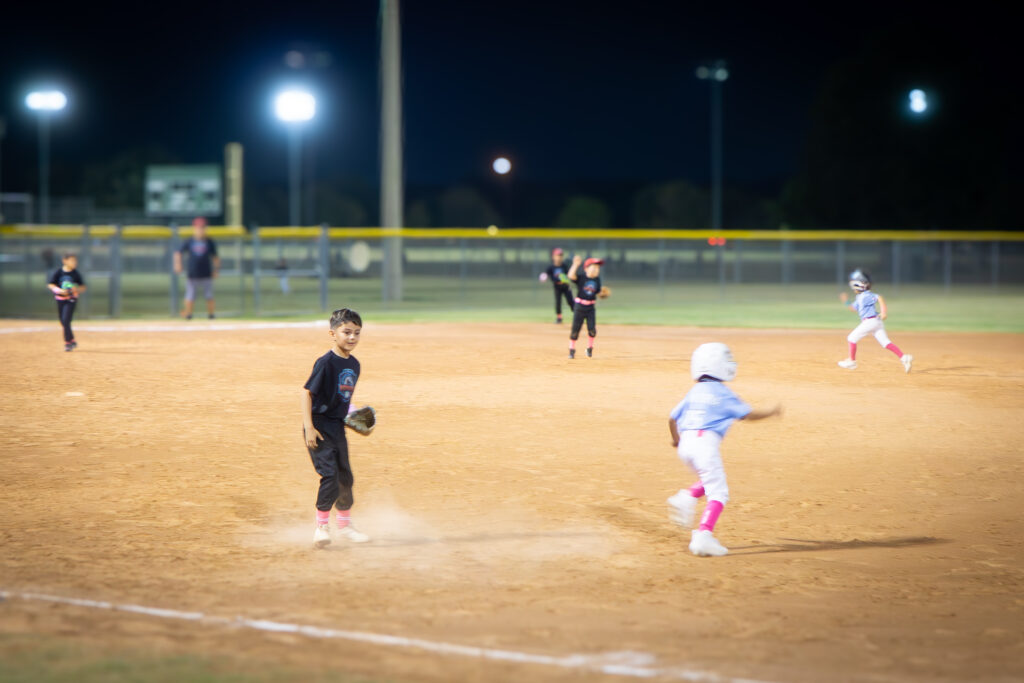
Dallas did not become a sports city by accident. It practiced being one. Teams, architects, and civic leaders built institutions and spaces that reinforced a shared identity. Families and youth programs kept those traditions alive. The city’s architects and planners now face the challenge of maintaining that identity while expanding access and relevance.
The contrasts remain: regional versus city identity; modernization versus preservation; broadcast spectacle versus neighborhood gyms; temporary tournament versus legacy. But these tensions can be productive when managed intentionally. Together, these layers form a coherent civic narrative.
Throughout my conversations for this article, I am left with one key through-line: sports in Dallas are not just entertainment. Rather, they represent a structure for belonging that unites residents across backgrounds. When designers, leaders, and citizens recognize that role and plan accordingly, Dallas can be the best version of what it already practices: a place that did not just adopt sports as a costume, but a city that became itself through sports.
Acknowledgements
This article would not have been possible without the insight, time, and generosity of the individuals who shared their experiences and perspectives with me. Their work continues to shape Dallas through the games we play and the communities we build around them.
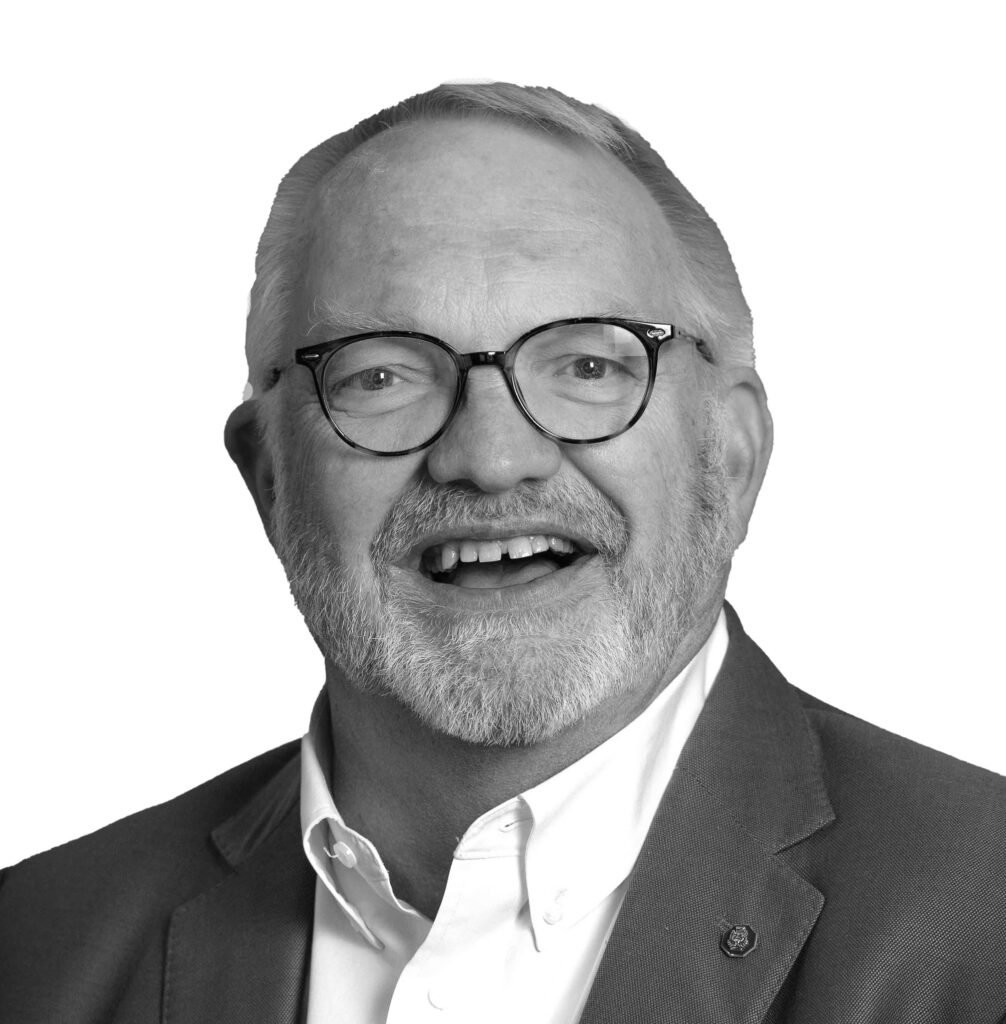
Norman Alston, FAIA Historic Preservation Architect, Norman Alston Architects
Norman Alston, FAIA, founder of Norman Alston Architects, has dedicated more than 45 years to preserving Texas’ architectural and cultural heritage. A leader in historic preservation, he has guided projects reviving landmark buildings across the state. He serves as vice chair of Dallas’ Urban Design Peer Review Panel and serves on the Texas Historical Commission’s Antiquities Advisory Board, continuing his lifelong mission to protect Texas’ historic places.
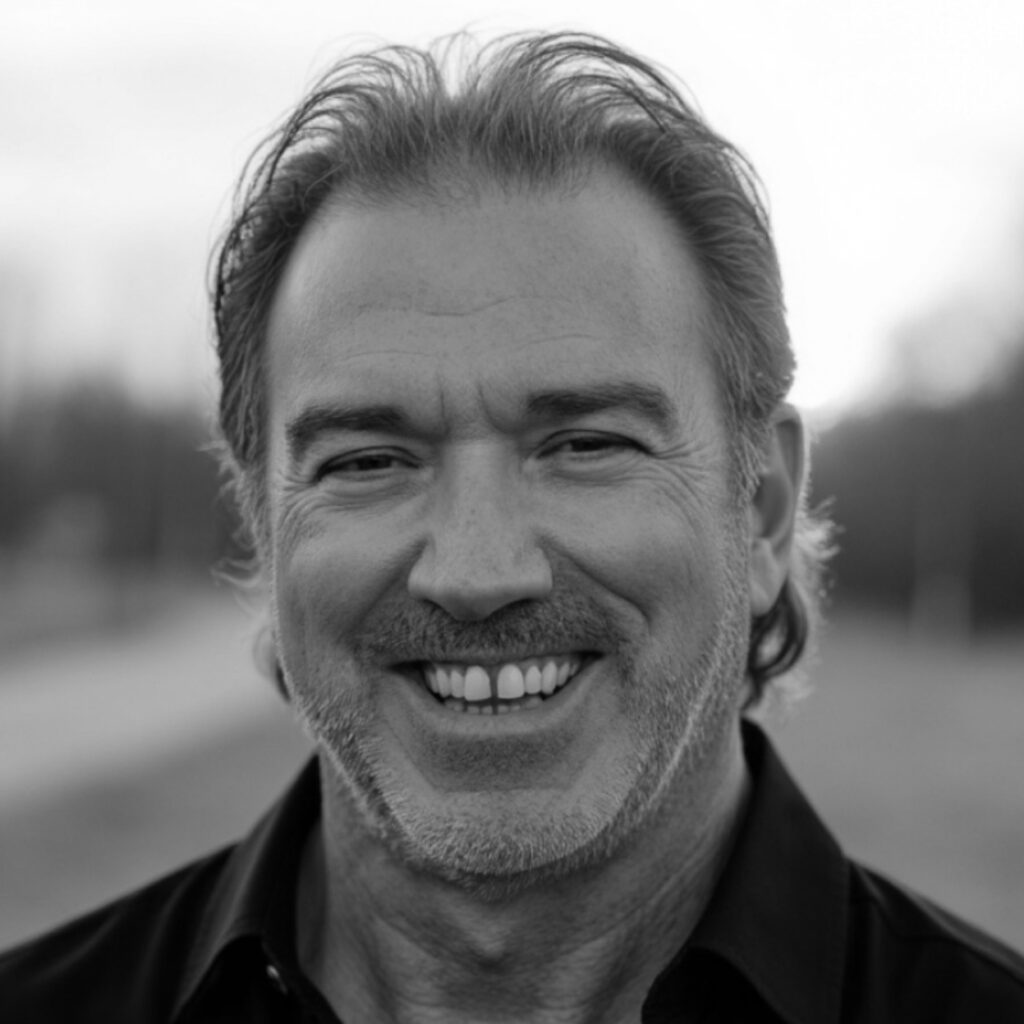
Robin Blakley Principal, Overland International
A principal leading business strategy for Overland International, Robin has worn many hats in the sports world, most out of his hometown Dallas, including the creation of Talent Sports International, a sports management firm, representing over 50 professional athletes. He began his career as the International Tour Director of the Assoc. of Tennis Professionals and co-led the Dallas 2024 Olympic bid effort for Dallas.

Rolando Blackman Former Dallas Mavericks Player
Rolando Blackman, a native of Panama City, Panama, is a former professional basketball player who played 13 seasons in the NBA. He was selected 9th overall in the 1981 NBA Draft by the Dallas Mavericks, where he became a four-time All-Star and the franchise’s leading scorer for many years. After concluding his playing career, Blackman moved into coaching and player-development roles, remaining active with the Mavericks organization.
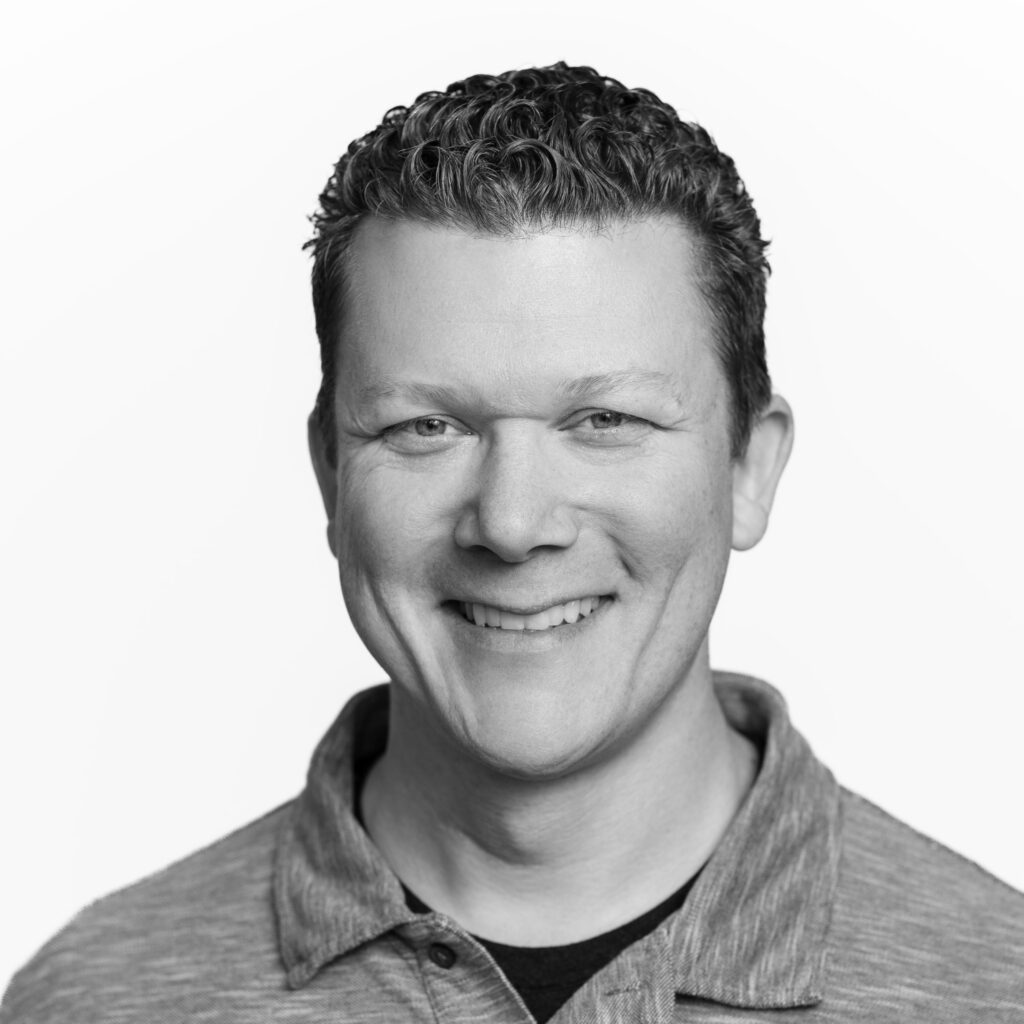
Owen Coffee, AIA Principal, Overland International
Owen Coffee is an architect whose work concentrates on the sports and entertainment sectors, after starting out his career in hospitality and retail. He works for Overland International in Denver and has lived in Colorado since 2001. He is an active member of the Downtown Denver Partnership and the local ULI chapter.

Jacob Huerta Director of Sports, Dallas Youth Sports
As a key part of the legacy of the Huerta family in youth athletics, Jacob works to expand access to affordable recreational sports for children in the Dallas – Oak Cliff area. As the first-ever player to sign up with Dallas Youth Sports, Jacob now leads the organization that helped shape his early journey.
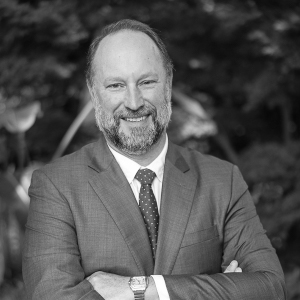
Ryan O’Connor Deputy Director, Dallas Parks and Recreation
Ryan leads two key areas of Dallas Park and Recreation: Partnership and Strategic Initiatives, and Planning and Design. Partnerships and Strategic Initiatives team oversees partnership management with key collaborators such as the Arboretum, Zoo, Klyde Warren Park, Fair Park, and others. Planning and Design focuses on department project planning, design, construction, facility and equipment operations and maintenance, capital bond projects, and public art in parks initiatives.
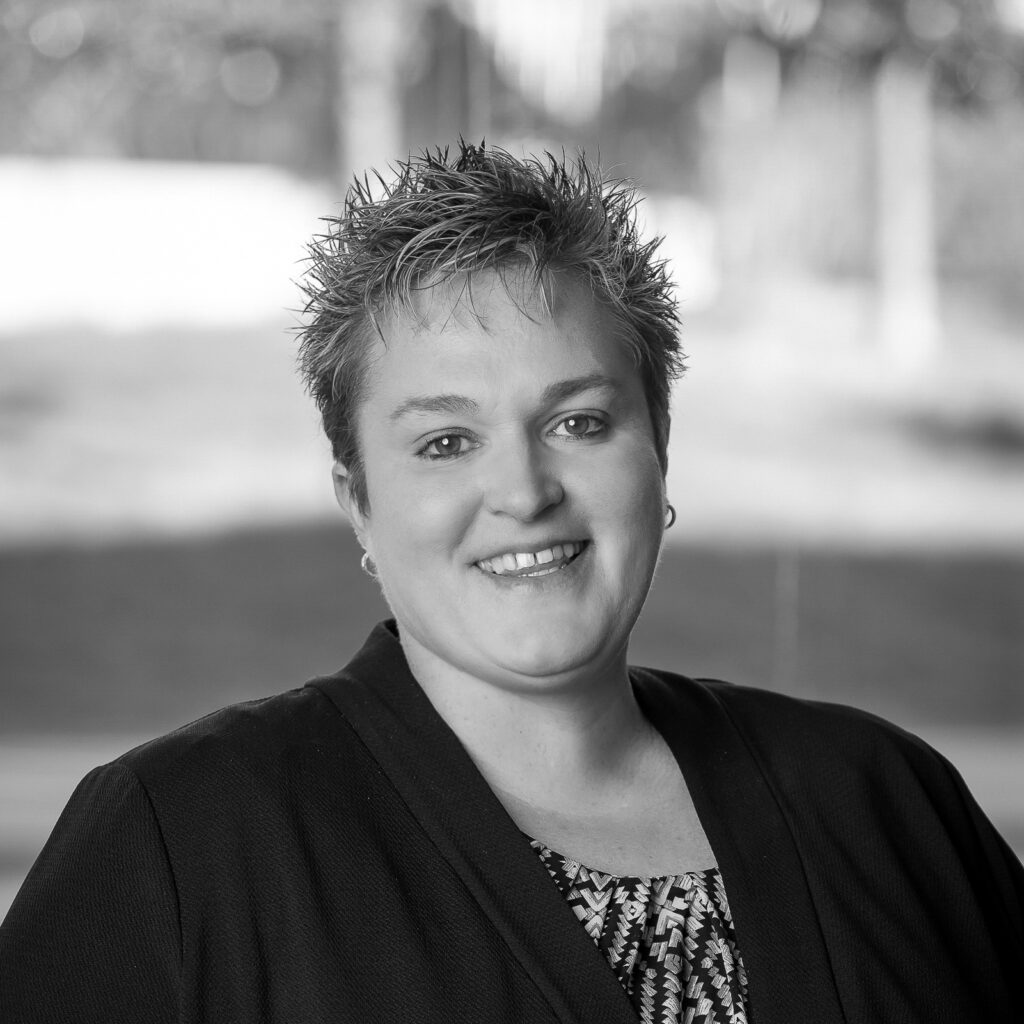
Monica Paul Executive Director, Dallas Sports Commission
As the Executive Director for the Dallas Sports Commission, Monica Paul plays an essential role in implementing bid strategies and marketing programs that enhance Dallas’ acquisition of sports competitions and events, including solicitation of Olympic, professional, collegiate, and amateur sports. Paul also currently serves as the President of the North Texas FIFA World Cup Organizing Committee.
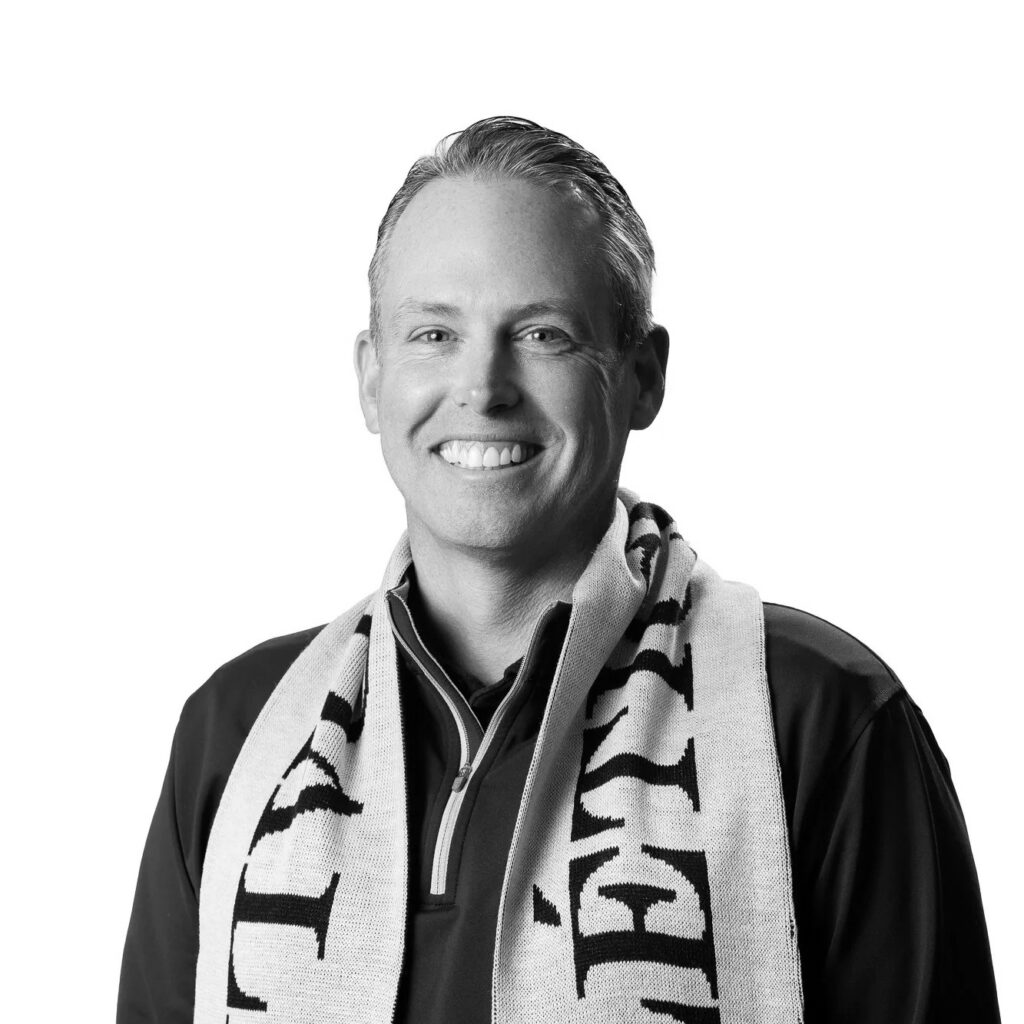
Matt Valentine Founder, Atlético Dallas
A longtime Dallas resident, Matt graduated from Washington University in St. Louis and built a successful entrepreneurial career in finance and oil & gas, co-founding Rimrock Midstream and Rimrock Energy Partners. Following those ventures, he pursued his passion for sports by founding Atlético Dallas, the city’s new USL expansion team set to debut in 2027. He lives in Highland Park and has two sons, Collin, a baseball player at Pepperdine University, and Reid, a professional soccer player with Texoma FC.